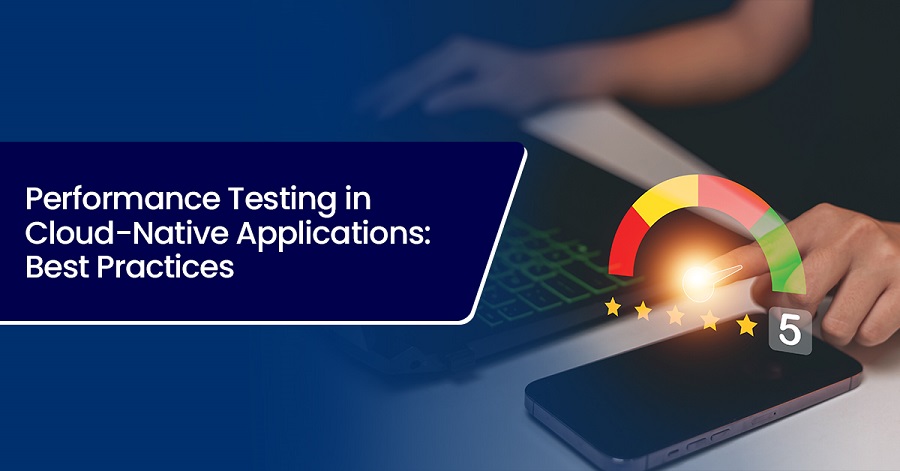Modern organizations race to launch their high-quality cloud applications as soon as possible. On the other hand, time to market also plays an essential role in determining the application's success. However, without effective testing, it's hard to be confident in the final product. Cloud-native applications leverage cloud infrastructure for scalability and flexibility. Here, performance testing becomes a critical aspect of the development process. Leading organizations prefer hiring software performance testing services quickly to identify potential bottlenecks before deployment easily.
Application performance testing services play a significant role in evaluating cloud-native applications' responsiveness, scalability, and stability. A performance testing strategy generally encompasses various methodologies, load testing services, web service performance testing, etc. These methodologies mainly concentrate on stimulating real-world scenarios to check how the application behaves under different load and stress levels.

An effective performance testing strategy should start with establishing a performance center of excellence within the organization. It is a dedicated team that will be in charge of defining performance testing methodologies, creating reusable test assets, and offering guidance on performance testing best practices.
1. Embrace Pragmatism
Performance load testing can be challenging, especially in modern IT environments. Companies often face limitations with tools or resources, leading to hesitation or neglect in performing these tests. However, waiting for perfect conditions is not a viable strategy. It is crucial to start performance testing promptly, utilizing all available resources and capabilities to their fullest potential. This practical performance testing approach ensures that some level of performance testing is completed, providing valuable insights into application behavior through accurate measurement and vigilant monitoring.
2. Leverage Open Workload Systems for Improved Testing
Open testing systems offer clear advantages over closed systems, particularly in maintaining stable testing conditions despite fluctuations in application performance. By adapting to changes in the application's behavior being tested, open systems provide more accurate and reliable results. Understanding concepts like Little's law from queueing theory helps illuminate the effectiveness of open testing systems in replicating real-world scenarios and comprehending the application's overall performance.
3. Deploy a Diverse Range of Tests
Teams must utilize a range of tests, including soak, spike, stress, resilience, and elasticity tests, to comprehensively assess application performance rather than solely relying on load testing. Each test provides distinct perspectives on the behavior of applications under varying circumstances. Organizations can enhance their understanding of application performance and resilience by integrating diverse test types into their testing protocol.
4. Define Success Metrics & Tests
Each organization possesses distinctive business requirements and goals, demanding a custom-tailored approach to conducting performance evaluations. It is imperative to establish precise success criteria consistent with the organization's objectives and procedures. Through testing against these predetermined measures, teams ensure the relevance and significance of their performance assessments, yielding actionable intelligence that facilitates enhancements aligned with business aims.
5. Testing All Layers of the Stack
Modern applications depend on an intricate array of technologies, from cloud infrastructure to microservices and APIs. To ensure a thorough performance assessment, the team must conduct testing for all system tiers, encompassing infrastructure, runtime environments, and application components. Organizations can effectively pinpoint and resolve potential constraints by evaluating the efficiency of each layer and their collective impact.
6. Prioritizing Mobile-First Testing
Testing should encompass backend systems and APIs to secure seamless user experiences across various device types and usage situations. By giving precedence to comprehensive and intentional testing for mobile, establishments can effectively tackle the distinctive hurdles presented by mobile applications and cater to the ever-changing demands of mobile users.
7. Focus on Realistic Workloads
Directing attention towards practical workloads is more sensible and significant than experimenting with extreme situations, such as minimal loads or maximum capacity. Developing tests that simulate customary usage patterns and anticipated production settings provides actionable insights that coincide with genuine user experiences. By prioritizing realistic workloads, organizations can enhance the utilization of resources and maximize their efforts for optimal effectiveness.
8. Foster a Performance Culture
Practical performance testing should not be treated as an afterthought but as a fundamental aspect of the development process, deeply rooted within a comprehensive culture of superior performance. Embracing Agile methodologies and seamlessly integrating performance testing into CI/CD procedures are vital for fostering a culture of top-level performance. However, sustaining long-term cultural transformation demands assertive leadership, dedication to resource allocation and training, and a steadfast determination to prioritize performance excellence throughout the organization.
Conclusion
The success of cloud-native applications relies on performance testing. Organizations can enhance their cloud-native application's performance and scalability by utilizing software performance testing services and implementing best practices such as establishing a center of excellence for performance, enacting wide-ranging testing methods, and adopting continuous performance testing.
